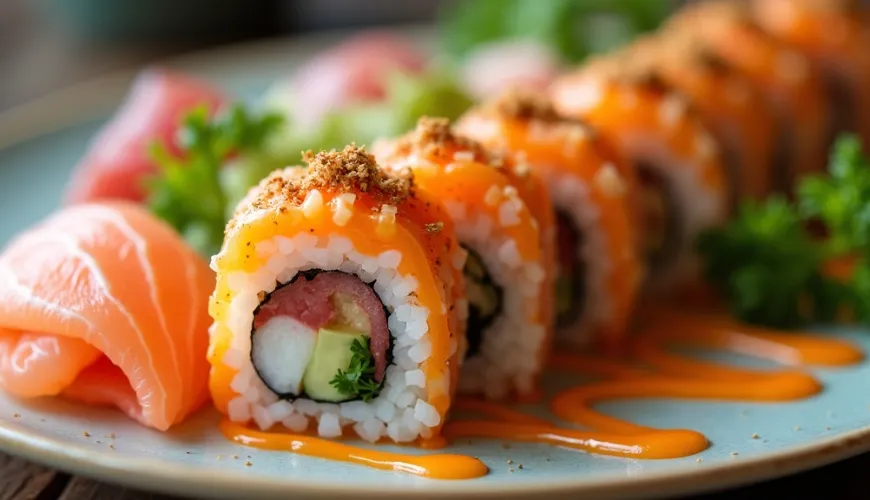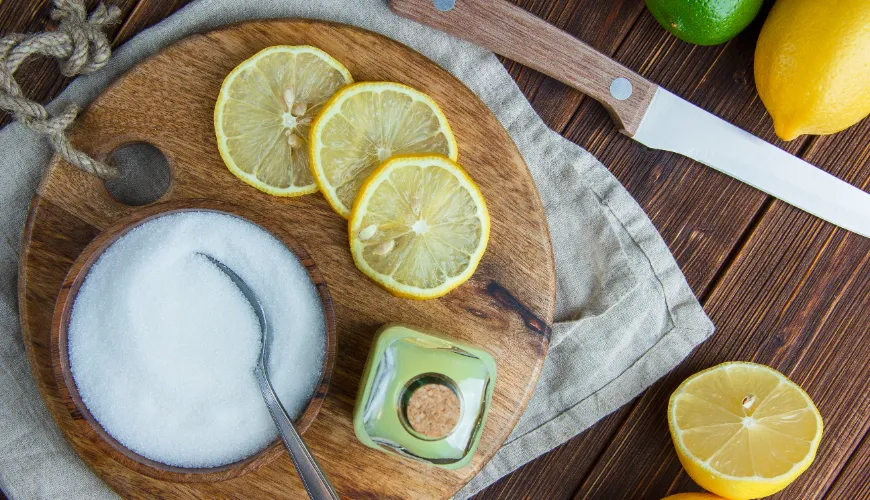
Where to Buy Sushi Mayonnaise and What to Look for When Choosing

What Exactly is Sushi Mayonnaise and Why Should You Start Using It at Home?
Sushi has firmly established itself on Czech tables in recent years. It is no longer the case that it is a luxury dish available only in Japanese restaurants—today, many people prepare sushi at home, whether it's classic maki rolls, nigiri, or modern fusion variations. Alongside quality rice and fresh ingredients, one of the subtle yet significant components is sushi mayonnaise, which can add a creamy depth and subtle spiciness to the entire dish. You might have encountered it under the name "Japanese mayonnaise" or "sushi mayonnaise." But what exactly is it, and why should we know about it?
Imagine a gentle, slightly sweet yet fresh taste that perfectly complements tuna, salmon, crab sticks, or avocado. Sushi mayonnaise is a special type of sauce commonly used in Japan not only for sushi but also in other dishes. Although it resembles classic mayonnaise, its composition and flavor profile are different. The most well-known brand producing this mayonnaise is Japanese Kewpie mayonnaise, which has become a phenomenon in the Western world due to its composition.
What Sets Sushi Mayonnaise Apart from the Classic?
The basic ingredients are similar—eggs, oil, vinegar—but the difference is in the details. The Japanese version uses only yolks, while the European often uses whole eggs. The acidity is not created by classic vinegar but by rice vinegar, which gives a milder taste. Lastly, it adds a dash of glutamate, which enhances the so-called umami taste, the fifth basic taste sensation alongside sweet, salty, sour, and bitter.
The result is a smoother, richer, and less acidic mayonnaise that pairs perfectly with ingredients typical of sushi. Combined with spicy sauces like sriracha or wasabi, it creates the iconic spicy sushi mayonnaise you’ll find in almost all sushi bars. Unlike regular mayonnaise, which can be heavy and "greasy," sushi mayonnaise remains light and perfectly highlights the taste of fish or vegetables.
How to Make Homemade Sushi Mayonnaise
If you don't feel like searching for Japanese Kewpie mayonnaise in specialty stores or online shops, don't worry. The sushi mayonnaise recipe is surprisingly simple, and you probably already have most of the ingredients at home.
Recipe for Homemade Sushi Mayonnaise:
- 2 yolks from free-range eggs
- 200 ml of vegetable oil (ideally canola or sunflower)
- 2 teaspoons of rice vinegar
- 1 teaspoon of sugar
- 1/2 teaspoon of salt
- optionally: a pinch of glutamate (e.g., in the form of kombu powder or tamari)
The procedure is classic: place yolks, vinegar, salt, and sugar in a tall container. Then slowly add oil while blending with a hand mixer until a thick emulsion forms. Finally, you can add a drop of sriracha or a little wasabi if you want a version with a slight spicy hint. The result? Homemade mayonnaise for sushi, which closely resembles the original in taste, and you know exactly what it contains.
An example from practice can be the preparation of a simple sushi roll with tuna and avocado, which a young family from Brno makes every Friday evening. When they first made homemade sushi mayonnaise according to the recipe and combined it with canned tuna in water, they were surprised at how much the taste shifted closer to that of a quality sushi bar. Additionally, children who previously refused sushi enjoyed this version enthusiastically, thanks to the mild and familiar taste of the mayonnaise.
Where Else to Use Sushi Mayonnaise?
Although most commonly used in sushi rolls, sushi mayonnaise has a much wider application. It is popular in "spicy tuna" or "California" rolls but is also excellent in poke bowl dishes or as a dip for tempura vegetables. Some chefs even use it when preparing Japanese sandwiches or in potato salad in the style of jagaimo sarada.
An interesting trend in recent years is using sushi mayonnaise in plant-based cooking. In combination with tofu, tempeh, or vegan "tuna" from chickpeas, you can create delicious and nutritious alternatives that appeal to those trying to reduce animal products. There are even recipes for vegan sushi mayonnaise, which uses aquafaba (chickpea water), vegetable oil, and rice vinegar. It is very close to the original in taste but without cholesterol and with a lower fat content.
Moreover, if you have children or picky eaters at home, sushi mayonnaise can be a great way to encourage them to try new tastes. The smooth texture and familiar taste often convince even those who otherwise refuse seaweed or raw fish.
How to Store and What to Watch Out For
Homemade sushi mayonnaise should be stored in the fridge and ideally consumed within 3–5 days. Due to the raw yolks, it is advisable to use fresh eggs from a reliable source. If you want to extend the shelf life, you can make it with pasteurized yolks, which are safer.
Storing in a jar with a lid is ideal, as is using a clean spoon each time you scoop it. If you have a piping bag or dispenser at home, you can create an elegant presentation of sushi rolls with delicate strips of sauce on the surface.
Where to Buy Sushi Mayonnaise and What to Watch Out For When Choosing
If you want to save time, you can buy ready-made sushi mayonnaise. Besides the mentioned Kewpie brand, there are several other options, including organic or vegan quality. However, it is important to read the ingredients—some versions may contain added preservatives, artificial flavors, or unnecessarily high sugar content.
On e-shops focused on a healthy lifestyle, like Ferwer, you can now find pure and natural sushi mayonnaise alternatives, suitable for those with food allergies or those who care about product composition. So if you are looking for an egg-free, gluten-free, or added sugar-free option, it is definitely worth checking out these stores' offerings.
As the Japanese chef and traditional cooking popularizer Harumi Kurihara aptly noted: "The true joy of food lies in the details." And sushi mayonnaise is precisely the detail that turns homemade sushi into an experience you'll look forward to with every bite.
It may seem like it's just a sauce. But anyone who has tried it knows that sushi without mayonnaise is like dumplings without sauce—something essential is simply missing. Whether you prepare it at home according to the recipe or opt for a ready-made version, you open the door to new taste adventures.

